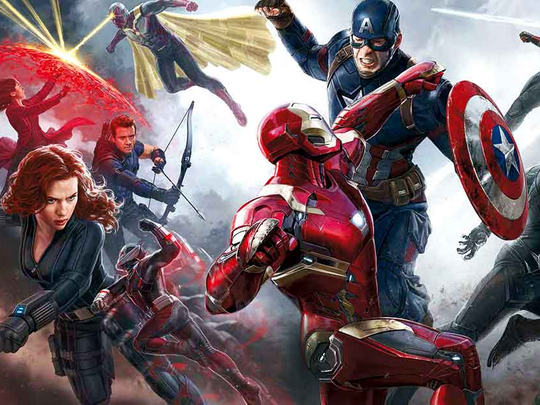
For a beleaguered Bollywood having a hard time coping with major flops and studios shutting down in 2016, the year ended on a high with Dangal. The Aamir Khan sports drama, at the time of writing, had netted Rs274 crore (Dh180 million) — about ten days into its release, cutting through the demonetisation debacle, which adversely affected earlier releases such as Rock On 2.
While Indian movies suffered last year, Hollywood films have begun to make a serious impact on domestic productions at the box office. Despite being the largest film-making country in the world, India’s film economy is stagnating.
The argument that demonetisation affected box office sales may not be entirely without merit, but it massively downplays how Indian audiences have changed and matured. Big-studio Bollywood’s obsession with star-driven movies without quality content is failing rapidly and 2016 is proof.
That of course is not written in stone. Udta Punjab, for example, easily one of last year’s best films to emerge out of Bollywood, just about recovered its investment, while Sultan helmed by Salman Khan breezed its way into the 100-crore club. But the fact remains that big-ticket Hindi movies flopped (Mohenjo Daro, Fitoor) even as Hollywood biggies like The Jungle Book, Captain America: Civil War, The Conjuring 2 and X-Men: Apocalypse soared.
“All Hollywood movies didn’t just have good openings, but remained strong for a long time,” Vivek Krishnani, Managing Director of Sony Pictures India, told Times of India last June. “The audience is now familiar with superhero characters and Hollywood has built strong franchises. The Jungle Book has shown that there is an audience out there for Hollywood films. But if you look closely, all these films belong to the genre that works in India — high VFX, action, and animated. They have a much wider appeal.”
India’s foray into supertech superhero cinema has occurred over the past decade with films like Krrish, Ra. One and more recently A Flying Jatt last year, but none turned out to be money spinners. The Krrish franchise made its money through clever marketing and dubbed versions in various regional languages to enhance appeal, but cannot compete with Marvel and DC, which run multibillion-dollar TV and film franchises across several networks and digital media platforms. It isn’t that India lacks the money, resources or VFX talent to produce results — the content was too poor for Indian audiences to pay for.
Even today, perhaps the most popular superhero movie to emerge from Bollywood remains Mr India made in 1987. Unfortunately, a remake/sequel is in the works, and if the failures of 2016’s sequels of successful films are anything to go by — Kahaani 2, Rock On 2, Tum Bin II, Jai Gangaajal and Tere Bin Laden: Dead or Alive — a movie must deliver more than just nostalgia to work. Housefull 3 is the only franchise Hindi film that enjoyed brisk business in 2016, no small thanks to Akshay Kumar who has built a solid reputation for himself as an actor and star.
“Good stories always get a good audience,” Shibasish Sarkar, Chief Operating Officer of Reliance Big Entertainment, told Forbes last month. “We need to develop better scripts. Consumers don’t come to the cinema on a formula so a franchise will not work just because it is a franchise story.”
Out of the 219 movies released by Bollywood last year, only 15 have recovered costs or made money, according to Box Office India. A Reuters report published last month noted that 2016 was the third consecutive year where Bollywood did not grow as an industry. To make matters worse, studios such as Disney India and Balaji Motion Pictures have decided to move away from Hindi film production.
Disney’s fate is particularly ironic as its Hollywood arm performed smashingly well with The Jungle Book, Moana, Captain America, Zootopia, Finding Dory and Rogue One — six of the year’s highest-grossing films worldwide. “Given the challenges with the current economic model for investing in the local film industry, we intend to shift the focus of our film strategy to driving our Hollywood movie slate in India,” the company said in its statement. “These movies have enjoyed considerable success, including The Jungle Book, which is the highest-grossing Hollywood movie of all time in India.”
Does this mean that it’s all gloom and doom for Bollywood? Not necessarily. Sony returned to Hindi film production with Chalk N Duster in early 2016 and isn’t shutting shop yet, while movies with truly compelling narratives, big or small, have paid dividends. Think Neerja, Kapoor & Sons, Airlift and Pink. This just goes to show that India still loves its movie fix. The only difference is that love isn’t limited by language or lack of access anymore. Bollywood needs a new game plan.









